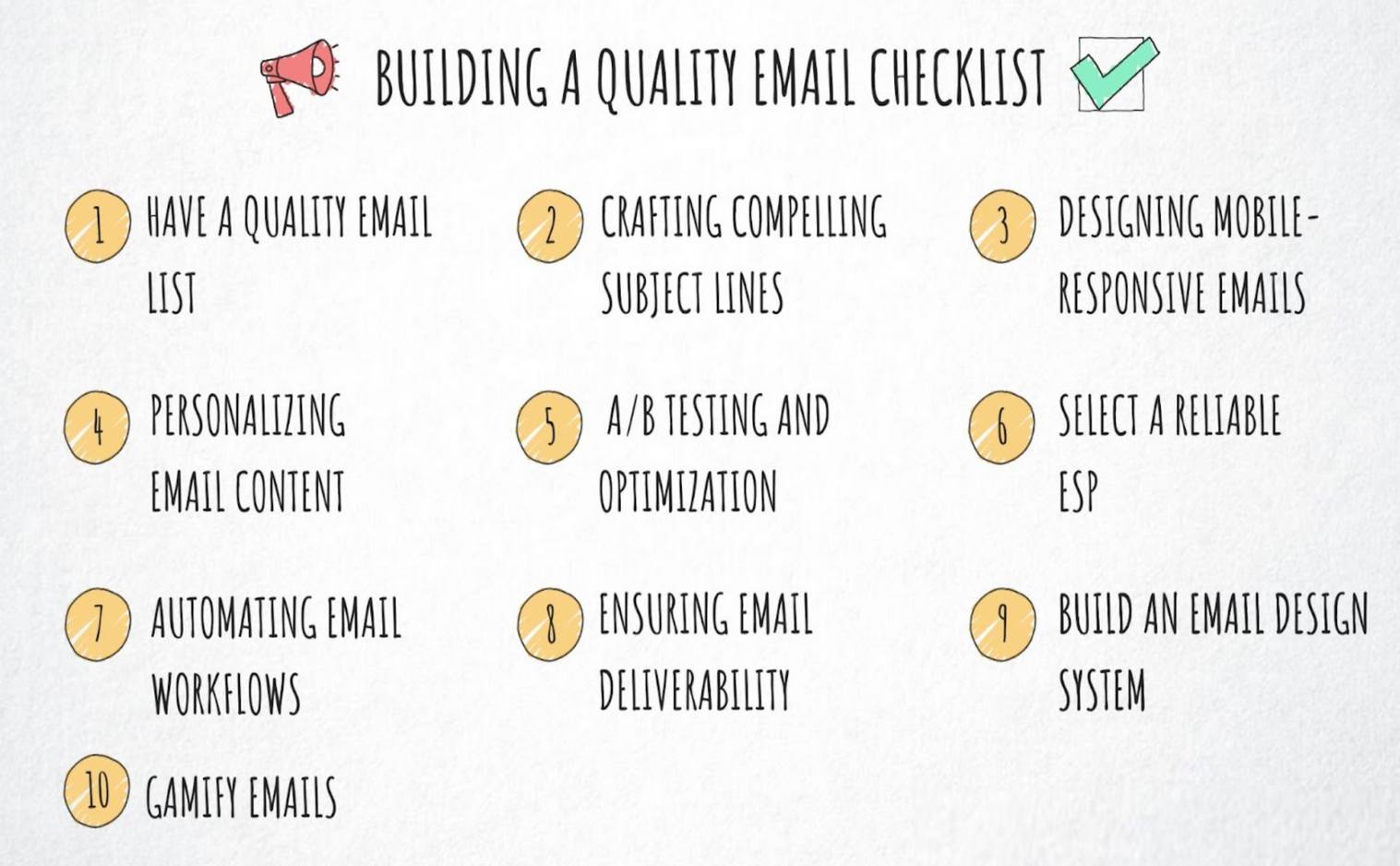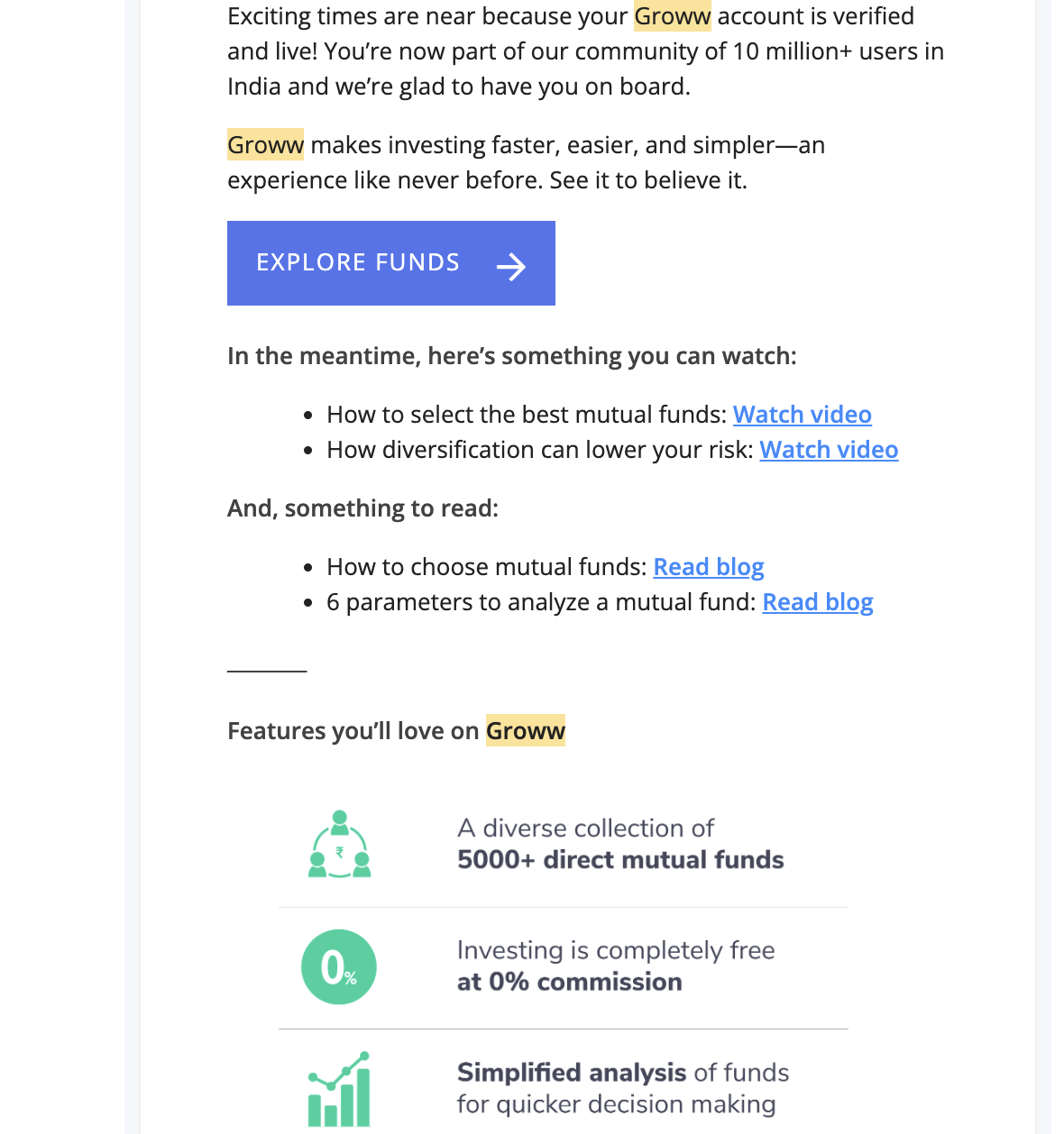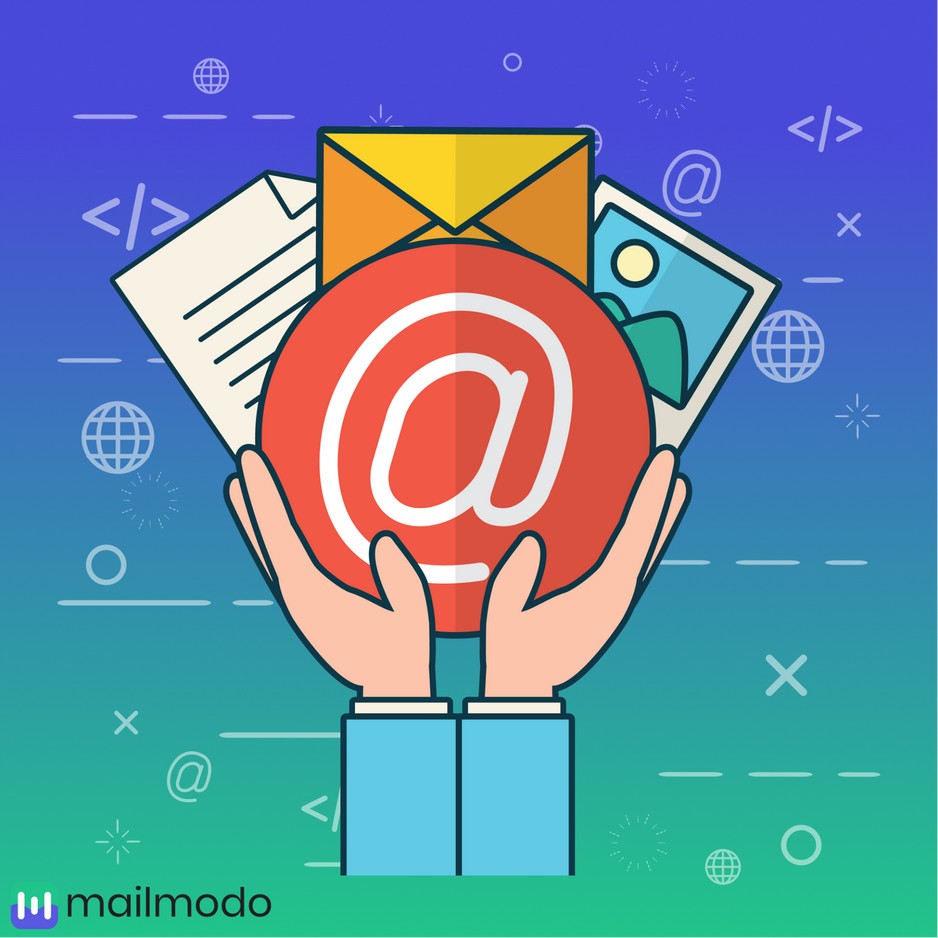Email marketing strategy requires planning to hit the ground running. Without a strategy, your marketing would lose out on a loyal customer base, producing irrelevant content that leads to lower conversions. As email lives on to be a channel that gives high ROI, it’s essential to have a solid strategy for every campaign, big or small, and business, irrespective of their stage.
This blog offers a comprehensive overview of 10 highly effective email marketing strategies that should be implemented right from the start to achieve continuous and fruitful results.
10 best email marketing strategies for higher conversions
These ten vital guidelines help you achieve excellent results with your email campaigns.

1. Building a quality email list
In terms of ROI, a quality email list surpasses alternative marketing channels like SEO and PPC. So, removing email addresses that have been unengaged and inactive for a long time is important. By freeing up the email list, you can boost the following metrics:
- Removing inactive subscribers will give you a targeted audience, improving your open rates. It also increases the chances of emails landing in the recipient’s inboxes, leading to higher deliverability. We recommend using an email finder tool in order to keep the accuracy of addresses on your list.
- Click-through rate increases since focused audiences are willing to click and take action.
- A clean email list safeguards inbox delivery and senders’ reputation post eliminating invalid/ inactive addresses, thereby minimizing spam or bounce issues.
Here are some ways to build a clean email list with lead magnets and opt-in forms:
- Identify your target audience based on your needs, preferences, and pain points. This helps curate compelling lead magnets that resonate with your audience.
- Offer high-quality, concrete content or resources that address the specific needs of your target audience.
?During sign-up, Groww offered a blog and two videos to educate the audience.

- Place opt-in forms strategically on your Landing page to capture the visitor’s attention. To maximize visibility, you can alternate between exit-intent pop-ups, slide-ins, or sticky bars.
2. Crafting Compelling Subject Lines
To increase the audience’s interest through the subject line, let’s look at a few tips to help curate attention-grabbing subject lines:
- Aim for under 50 characters to ensure complete visibility on various devices and email clients in a world of overflowing inboxes.
- Select words that evoke curiosity and convey your message’s essence.
- Incorporate personalization in your subject lines to make them more relevant and tailored to each recipient.
- Offer a limited-time discount or a deadline to create a sense of urgency.
- Pose a compelling question that piques the audience’s curiosity and engages them to learn more.
- Incorporate humor or clever wordplay in your subject lines to stand out and make viewers smile.
- Experiment with different subject lines to assess what works best with your audience.
3. Designing Mobile-Responsive Emails
For optimal user experience, responsive design is paramount in today’s digital landscape. Here are the key elements that you need to keep a tab on while designing responsive emails:
- Responsive email layouts automatically adjust and adapt to different screen sizes.
- Optimize your email content by keeping the content concise, clear, and easy to skim.
- Use fonts that are legible on smaller screens. The recommended minimum font size for body text is 14 pixels.
- Optimize your images for mobile devices by reducing file sizes with zero compromises on quality.
- Ensure any buttons or links in your email are easy to tap from mobile.
- Mobile emails should have a one-column layout to simplify the design and simplify scrolling.
- Make the CTA stand out with contrasting colors and larger fonts.
- Keep the overall design of your email minimalistic by cutting down on excessive images, animations, or complex layouts.
4. Personalizing Email Content
Email personalization is not only about the question “how to start an email” and goes beyond just addressing “Dear {INSERT NAME}.”
It’s about providing your recipients with tailored experiences. It helps to feel like you are having a one-on-one conversation with every person on the list.
Personalization begins once you segment your lists. Let’s find the techniques to segment and target email content:
- Segmenting your audience based on browsing behavior and actions helps send targeted emails that align with their interests and preferences.
- Dividing your email list based on demographic factors such as age, gender, location, or job title helps tailor content to specific demographic groups.
- Analyze your customer’s purchase history, as this data aids in sending targeted emails to promote related products or offer personalized recommendations.
- Organize your email list into segments based on geographic location to tailor your emails to their regional preferences, local events, or time-sensitive offers.
- Segment your subscribers based on their engagement level—active, inactive, and non-openers—to nurture relationships, rekindle interest, and maximize email marketing campaign effectiveness.

5. A/B Testing and Optimization
For email marketing campaigns, there are several elements you can test to improve their effectiveness through A/B testing.
- Experimenting with different subject lines directly impacts email open rates and engagement.
- Optimizing click-through rates and conversions involves testing elements of the CTA button, such as word placement, design, and color.
- Testing visual elements, including sending videos, images, and graphics, and experimenting with their placement or absence, aids in capturing the audience’s attention effectively.
- Experimenting with content variations, tone of voice, personalization, and email length helps to understand the best way to communicate with your audience and boost engagement and conversions.
6. Select a Reliable ESP
Let’s look at the factors to consider while selecting an ESP:
- Consider the audience size and industry.
- Choose an ESP with growth-oriented features, such as a robust tech infrastructure that facilitates high-volume email sending.
- Prioritize a user-friendly and intuitive interface for a seamless experience.
- Assess the domain score and deliverability factors for improved inbox placement.
- Look for features that support seamless communication across devices and platforms.
- Prioritize robust testing capabilities for effective email campaign execution.
- Opt for an ESP with automation features to streamline manual tasks.
The future of emails is AMP, as you can achieve only a handful with regular HTML Emails. One great tool to craft interactive AMP emails and unlock email marketing’s true potential is Mailmodo. It lets you automate and trigger targeted emails and also presents you with a detailed report on a single dashboard. Interactive AMP emails are made simple, and you can send your email blast in a couple of steps:
- Pick a ready-made AMP email template from their constantly updated library
- With the intuitive drag-and-drop editor, you can effortlessly create a new AMP email template from scratch, with zero coding skills, in minutes.
7. Automating Email Workflows
Specific business goals and target audiences can determine how effective automated email sequences are. Moreover, there are several email marketing automation tools and platforms available for setting up email automation workflows.
Here are some examples of effective automated email sequences:
- Welcome emails introduce the brand, highlight key features and benefits, and provide valuable resources to new subscribers.
- Lead nurture emails educate and build relationships with leads by addressing their pain points via case studies, whitepapers, and blog posts.
- By highlighting new products, offering exclusive promotions, and seeking feedback, re-engagement email sequences aim to regain inactive subscribers’ interest.
8. Ensuring email deliverability
To improve email deliverability, you can implement the following strategies:
- Use double opt-ins as part of signing up for the email list. The extra time and effort subscribers take is the silent assurance we need to keep our deliverability intact.
- If your IP address is listed on email blacklists, ISPs may block or filter your emails. To resolve IP blacklisting issues:
- Regularly monitor your IP reputation using tools like MX Toolbox or Sender Score.
- Identify the reason for blacklisting (e.g., spam complaints, suspicious activity) and take necessary actions to address it.
- Bounces occur when emails fail to reach the intended recipient’s inbox due to invalid email addresses (hard bounces) or temporary delivery issues (soft bounces).
- Analyze your email list regularly and chop off hard bounce addresses.
- Analyze soft bounces to identify issues such as full mailboxes or temporary server problems.
- Implement proper authentication protocols like SPF, DKIM, and DMARC to help verify the authenticity of your emails, which can positively impact deliverability.
- Ensure these authentication mechanisms are correctly set up for your domain and align with your sending practices.
9. Build an email design system
Having your email design system empowers you to establish comprehensive guidelines for your email templates, guaranteeing a consistent brand image in all communications.
?Zouk’s vegan apparel brand emails always follow an earthly palette, as shown below:

Furthermore, a robust email design system helps minimize errors in the email creation process. A predefined template gallery allows designers to scale email design, creating new emails that adhere to the standards.
Sticking to brand color, fonts, and other design elements in your emails reinforces the brand identity, increasing brand recall and helping your audience recollect as they encounter emails in their inboxes.
10. Gamify emails
Why to send an ordinary promo email when you can add a pop of fun with spin-a-wheel embedded in the email body?
You can incorporate gamification in your email marketing campaigns in the following ways. For example,
- Incorporate gamification in your seasonal email campaigns, such as scratch cards for birthday coupons, Halloween scavenger hunts, and puzzles during Christmas, new year, etc.,
- You can encourage users to provide feedback through embedded forms in the emails.
Wrap up
Email marketing continues to be a heavyweight in the digital marketing armory as it helps to communicate effectively with your customers. By devising a robust email strategy, you can reap the best out of your email campaign. Don’t hesitate to invest in a dependable ESP like Mailmodo, as it saves you time and reduces your effort significantly.
 1,493
1,493
 10 min
10 min




